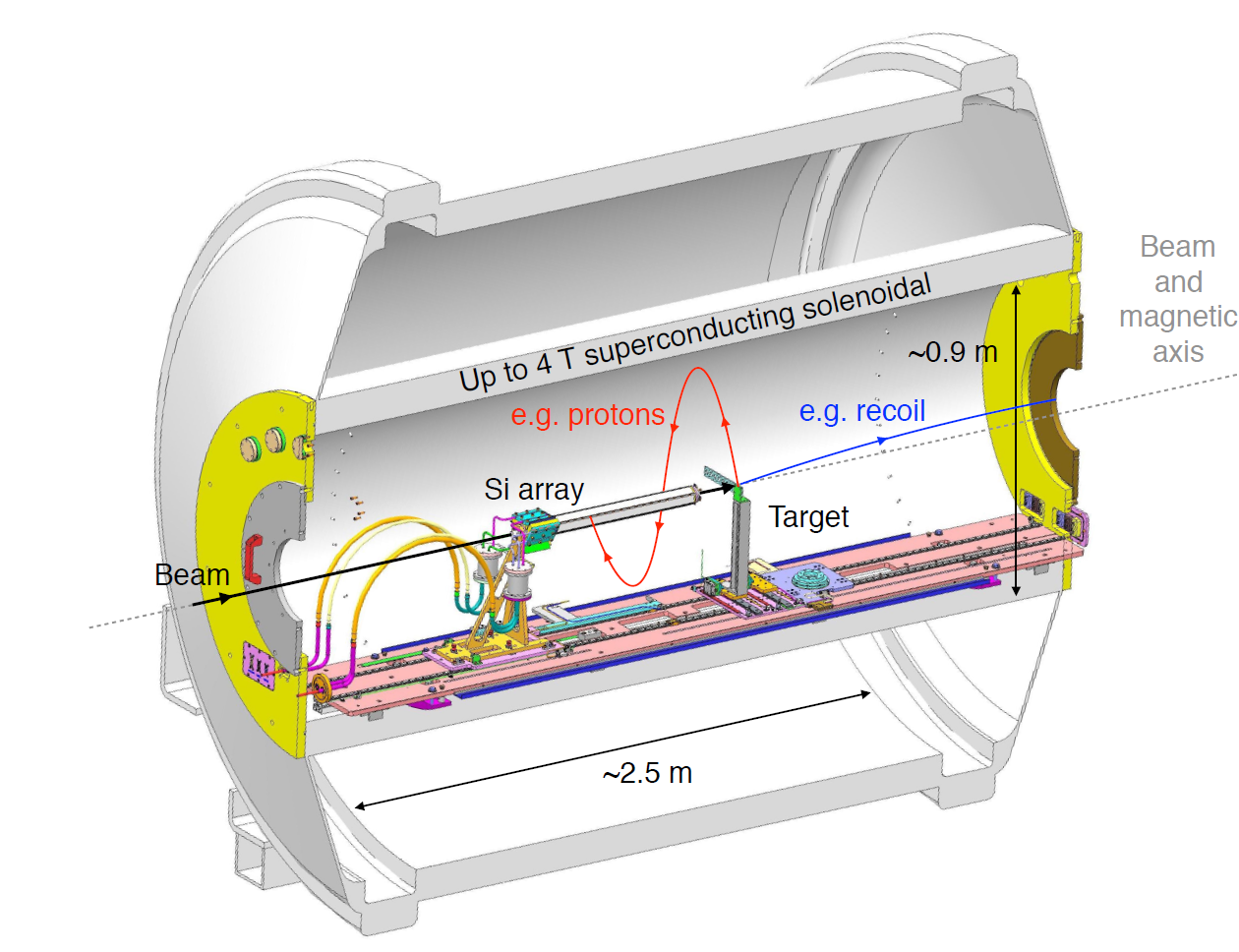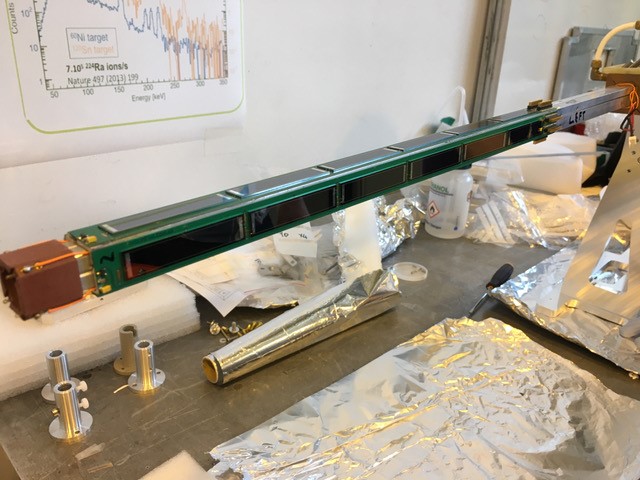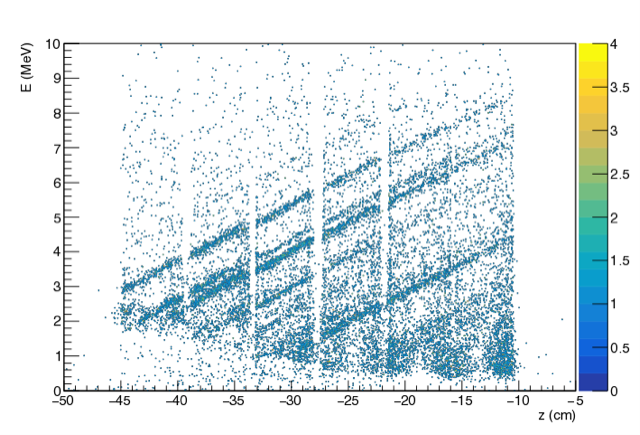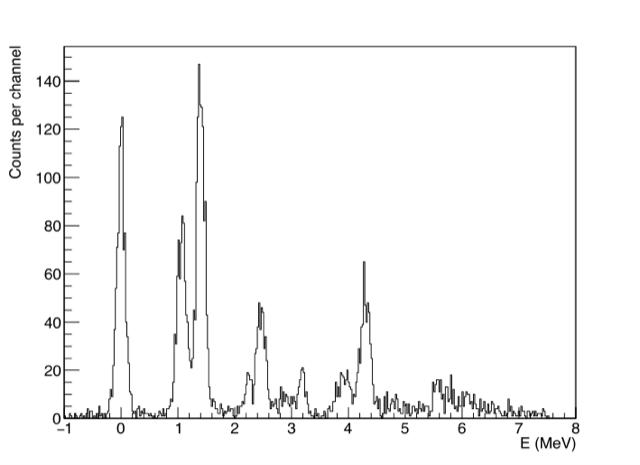An international team of experimentalists and theorists working at CERN’s nuclear-physics facility ISOLDE have succeeded in performing the first ever laser-spectroscopy measurements of a short-lived radioactive molecule, radium monofluoride. For physicists studying molecules, laser spectroscopy, in which laser light is shone on molecules to reveal their energy structure, is a staple tool in the toolbox. Until now, however, researchers hadn’t been able to use the technique to study short-lived radioactive molecules, which contain one or more unstable nuclei. Compared to atoms, such molecules offer a superior means to explore fundamental symmetries of nature and to search for new physics phenomena. The results, published today in the journal Nature, represent a pivotal step towards using these molecules for fundamental physics research and beyond.
“Our measurements demonstrate that radium monofluoride molecules can be chilled down to temperatures that would allow researchers to investigate them in extraordinary detail,” says principal investigator Ronald Garcia Ruiz. “Our results pave the way to high-precision studies of short-lived radioactive molecules, which offer a new and unique laboratory for research in fundamental physics and other fields.”
Radium monofluoride molecules are particularly interesting because they contain radium, some isotopes of which have nuclei shaped like a pear, with more mass at one end than the other. These exotic pear shapes amplify processes that break fundamental symmetries of nature and could reveal new physics phenomena beyond the Standard Model.
For example, processes that break time-reversal symmetry – that is, that vary if you swap forwards in time for backwards – would give particles an electric dipole moment. This can be thought of as a shift of the cloud of virtual particles that surround every elementary particle away from the centre of mass. The Standard Model predicts a non-zero but very small electric dipole moment, but theories beyond the Standard Model often predict larger values. Nuclear pear shapes would amplify a putative electric dipole moment and would thus offer a sensitive means to probe new phenomena beyond the Standard Model – one that would be complementary to searches for new physics at high-energy particle colliders such as the Large Hadron Collider.
The current experiment builds on theoretical investigations of the energy structure of radium monofluoride. Based on these investigations it was predicted that the molecule is amenable to laser cooling, whereby lasers are used to cool down atoms or molecules for high-precision studies. “This laser-spectroscopy study of radium monofluoride at ISOLDE provides strong evidence that the molecules can indeed be laser cooled,” says ISOLDE spokesperson Gerda Neyens.
Garcia Ruiz and colleagues used the following method to obtain their results. After producing radioactive radium isotopes by firing protons from the CERN’s Proton Synchrotron Booster on a uranium carbide target, radium monofluoride ions were formed by surrounding the target with carbon tetrafluoride gas. The radium monofluoride ions were then sent through ISOLDE’s Collinear Resonance Ionisation Spectroscopy (CRIS) setup, where the ions were turned into neutral molecules that were subsequently subjected to a laser beam that boosted them to excited energy states at specific laser frequencies. A subset of these excited molecules was then ionised with a second laser beam and deflected onto a particle detector for analysis.
By analysing the measured spectra of ionised excited molecules, the team was able to identify the low-lying energy levels of the molecules and some of the properties that demonstrate that the molecules can be laser cooled for future precision studies.
“Our technique allowed the study of radium monofluoride molecules that have lifetimes as short as a few days and are produced at rates lower than one million molecules per second,” says Garcia Ruiz.
In addition to their potential in exploring fundamental symmetries, molecules made of short-lived isotopes can be highly abundant in space, for example in supernova remnants or in the gas ejected from mergers of neutron stars.
“We anticipate that the approach can also be employed to perform laser spectroscopy on other molecules, including those composed of isotopes with lifetimes of a few tens of milliseconds,” Garcia Ruiz adds. This will allow future studies of bespoke molecules, designed to amplify symmetry-violating properties.
Introducing ISOLDE, CERN’s nuclear-physics facility (Video: CERN)








